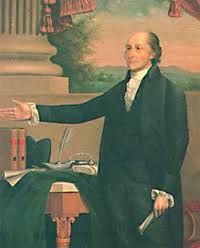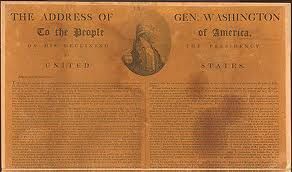The National Football League (NFL) has a problem with not just holding its players responsible for domestic abuse but with investigating itself on the issue.
On her show MSNBC’s Rachel Maddow reported that it isn’t just the Ravens’ Ray Rice beating his then fiance unconscious in an Atlantic City casino elevator but other players who have not only been charged but convicted of abuse and assault who are still playing.
In light of all the attention that the Rice incident has drawn and the inconsistent statements by NFL Commissioner Roger Goodell, there are calls for Mr. Goodell to resign or be fired. One of the NFL’s sharpest critics, ESPN’s Keith Olbermann took to the airways over the last several nights to chastise Commissioner Goodell
Last night, ESPN’s Keith Olbermann called on NFL Commissioner Roger Goodell to resign over the domestic abuse scandal surrounding Baltimore Ravens running back Ray Rice. In a new segment set to air tonight, Olbermann changed his mind: Goodell should not resign, the host argued – He should be fired.
It was a report from the Associated Press, claiming that law enforcement sent the video of Rice beating his then-fiancée unconscious in an elevator months before it was released by TMZ this week, that made Olbermann argue for the commissioner’s termination. Goodell had claimed that he had not seen the video until now.
“You have already forfeited your privilege of resigning,” Olbermann said to Goodell, saying that the only way for the NFL “to restore just the slightest credibility to the den of liars” that is the league would be for them to “fire you.”
Keith also ripped the commissioner for his appointments questioning the independence of the former FBI Director Robert Meuller and two team owners, who are his friends, to investigate.
And the calls for Goodell’s resignation go on: from David Haugh at The Chicago Tribune
Forgive me for not waiting with bated breath for the outcome of the so-called independent investigation of the NFL’s handling of the Ray Rice case.
Independent implies free of bias, which seems implausible for the panel the league assembled to evaluate the accountability of Commissioner Roger Goodell.
It will be led by former FBI director Robert Mueller, a partner in the law firm WilmerHale that recently helped the NFL negotiate a Sunday Ticket deal with DirectTV worth billions. It will be aided by two Goodell supporters who also happen to his bosses, owners John Mara of the Giants and Art Rooney II of the Steelers.
Apparently, Goodell’s uncle and cousin were busy. [..]
The idea of crisis management is to control damage, not create more. The NFL hiring rich, white male cronies as a checks-and-balance system for Goodell only enhanced the perception that the commissioner can’t be trusted regarding the Rice case. In trying to protect “the shield,” as Goodell likes to call the league, he keeps diminishing its brand. How many newspapers and websites in the country Thursday referred to the NFL as the National Football Liars? What’s the cumulative effect of universal criticism? [..]
When punishing the Saints organization in 2012 for the bounty scandal, despite denials by many that they were not aware of such a system in place, Goodell famously said that ignorance is no excuse. Ironically, Goodell’s words resonate loudest now. Ignorance is no excuse. [..]
Many owners probably will continue to back Goodell unless sponsors such as Marriott or FedEx threaten to sever ties with the league. Short of sponsors fleeing, the old boys’ club will point to the NFL’s second-least-valuable team, the Bills, selling recently for $1.1 billion as a sign that Goodell excels at the part of the job they consider most important.
Effective commissioners find ways to make money and a difference. Goodell no longer qualifies as one and should step down.

 The first Congress of the United States approves 12 amendments to the U.S. Constitution, and sends them to the states for ratification. The amendments, known as the Bill of Rights, were designed to protect the basic rights of U.S. citizens, guaranteeing the freedom of speech, press, assembly, and exercise of religion; the right to fair legal procedure and to bear arms; and that powers not delegated to the federal government were reserved for the states and the people.
The first Congress of the United States approves 12 amendments to the U.S. Constitution, and sends them to the states for ratification. The amendments, known as the Bill of Rights, were designed to protect the basic rights of U.S. citizens, guaranteeing the freedom of speech, press, assembly, and exercise of religion; the right to fair legal procedure and to bear arms; and that powers not delegated to the federal government were reserved for the states and the people.
 . . . . Andre Malraux, the French minister of culture, commissioned him to design a new ceiling for the Paris Opera after seeing Chagall’s work in Daphnis et Chloe. Working with a surface of 560 square meters, Chagall divided the ceiling into color zones that he filled with landscapes and figures representing the luminaries of opera and ballet. The ceiling was unveiled on September 23, 1964, during a performance of the same Daphnis et Chloe. As usual, a few detractors condemned Chagall’s work as overly primitive, but this criticism was drowned out in the general acclaim for the work. In 1966, as a gift to the city that had sheltered him during World War II, he painted two vast murals for New York’s Metropolitan Opera House (1966).
. . . . Andre Malraux, the French minister of culture, commissioned him to design a new ceiling for the Paris Opera after seeing Chagall’s work in Daphnis et Chloe. Working with a surface of 560 square meters, Chagall divided the ceiling into color zones that he filled with landscapes and figures representing the luminaries of opera and ballet. The ceiling was unveiled on September 23, 1964, during a performance of the same Daphnis et Chloe. As usual, a few detractors condemned Chagall’s work as overly primitive, but this criticism was drowned out in the general acclaim for the work. In 1966, as a gift to the city that had sheltered him during World War II, he painted two vast murals for New York’s Metropolitan Opera House (1966). When the Civil War broke out in 1861, shortly after Lincoln’s inauguration as America’s 16th president, he maintained that the war was about restoring the Union and not about slavery. He avoided issuing an anti-slavery proclamation immediately, despite the urgings of abolitionists and radical Republicans, as well as his personal belief that slavery was morally repugnant. Instead, Lincoln chose to move cautiously until he could gain wide support from the public for such a measure.
When the Civil War broke out in 1861, shortly after Lincoln’s inauguration as America’s 16th president, he maintained that the war was about restoring the Union and not about slavery. He avoided issuing an anti-slavery proclamation immediately, despite the urgings of abolitionists and radical Republicans, as well as his personal belief that slavery was morally repugnant. Instead, Lincoln chose to move cautiously until he could gain wide support from the public for such a measure.

 Originally published in David Claypoole’s American Daily Advertiser on September 19, 1796 under the title “The Address of General Washington To The People of The United States on his declining of the Presidency of the
Originally published in David Claypoole’s American Daily Advertiser on September 19, 1796 under the title “The Address of General Washington To The People of The United States on his declining of the Presidency of the The building would take nearly a century to complete, as architects came and went, the British set fire to it and it was called into use during the Civil War. Today, the Capitol building, with its famous cast-iron dome and important collection of American art, is part of the Capitol Complex, which includes six Congressional office buildings and three Library of Congress buildings, all developed in the 19th and 20th centuries.
The building would take nearly a century to complete, as architects came and went, the British set fire to it and it was called into use during the Civil War. Today, the Capitol building, with its famous cast-iron dome and important collection of American art, is part of the Capitol Complex, which includes six Congressional office buildings and three Library of Congress buildings, all developed in the 19th and 20th centuries. On September 25, 1789, the first Congress of the United States adopted 12 amendments to the U.S. Constitution–the Bill of Rights–and sent them to the states for ratification. Ten of these amendments were ratified in 1791. In November 1789, North Carolina became the 12th state to ratify the U.S. Constitution. Rhode Island, which opposed federal control of currency and was critical of compromise on the issue of slavery, resisted ratifying the Constitution until the U.S. government threatened to sever commercial relations with the state. On May 29, 1790, Rhode Island voted by two votes to ratify the document, and the last of the original 13 colonies joined the United States. Today, the U.S. Constitution is the oldest written constitution in operation in the world.
On September 25, 1789, the first Congress of the United States adopted 12 amendments to the U.S. Constitution–the Bill of Rights–and sent them to the states for ratification. Ten of these amendments were ratified in 1791. In November 1789, North Carolina became the 12th state to ratify the U.S. Constitution. Rhode Island, which opposed federal control of currency and was critical of compromise on the issue of slavery, resisted ratifying the Constitution until the U.S. government threatened to sever commercial relations with the state. On May 29, 1790, Rhode Island voted by two votes to ratify the document, and the last of the original 13 colonies joined the United States. Today, the U.S. Constitution is the oldest written constitution in operation in the world.